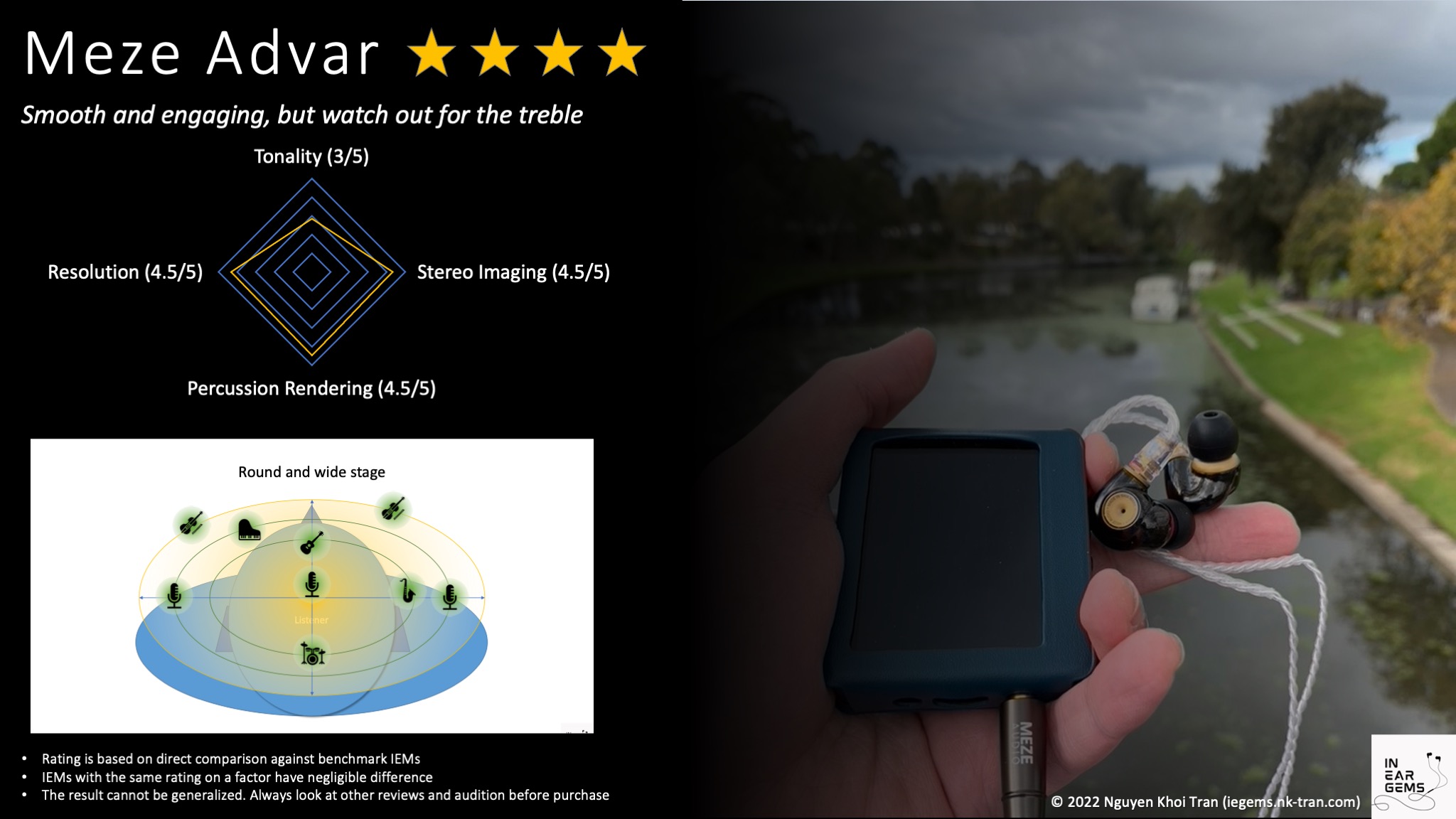Meze Advar - Smooth and engaging, but watch out for the treble
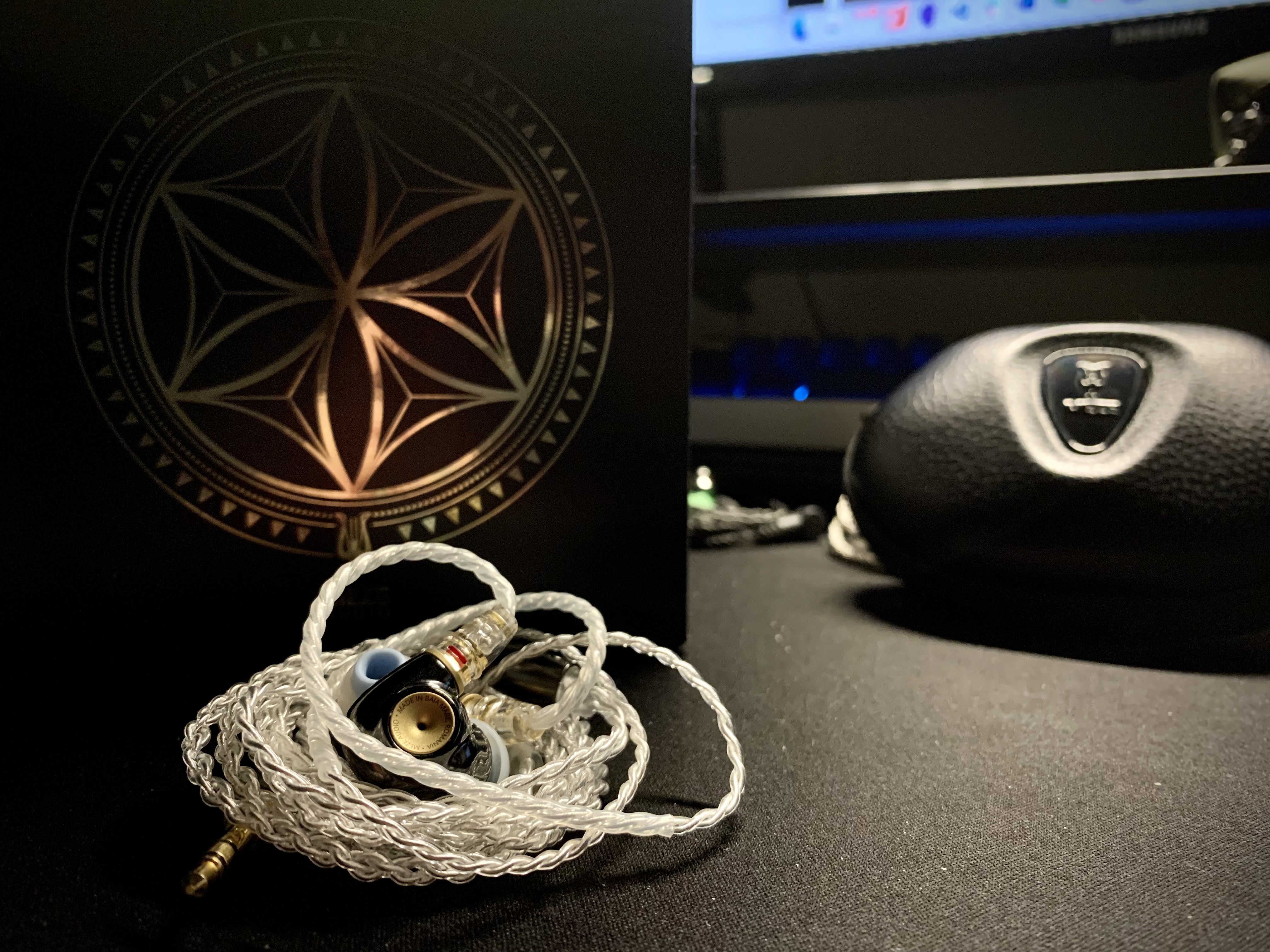
tl;dr: The overall tonality of Advar is surprisingly similar to Campfire Audio Andromeda 2020. However, it has a 8kHz peak that can become piercing with harsh genres. Advar is competitively resolving, very dynamic, and has a 3D soundstage.
Do you feel jaded after climbing the “audiophile” hill for a while?
I sometimes recall the feeling of the early days when every incoming IEM was magical, and I couldn’t wait to climb on the next hype train. Nowadays, my default reaction to most (sometimes shockingly expensive) IEMs is: “Yup. It’s an IEM. Let’s measure and do some A/B tests”.
That was my starting point when I picked up the Meze Advar from the post office as a part of a review tour arranged by @Andykong on behalf of Meze.
Of course, I measured, and A/B tested Advar. However, I also rediscovered some of that early days’ magic in one week I spent with Advar. Let me tell you about this IEM.
Non-sound Aspects
Advar is Meze’s latest single dynamic driver IEM. By the time I write this article, Advar retails for $700, putting it in direct competition with Dunu Vulkan, Fiio FH9 and FD7, the lower-end of Westone MACH series, and, of course, the Blessing 2 family of Moondrop.
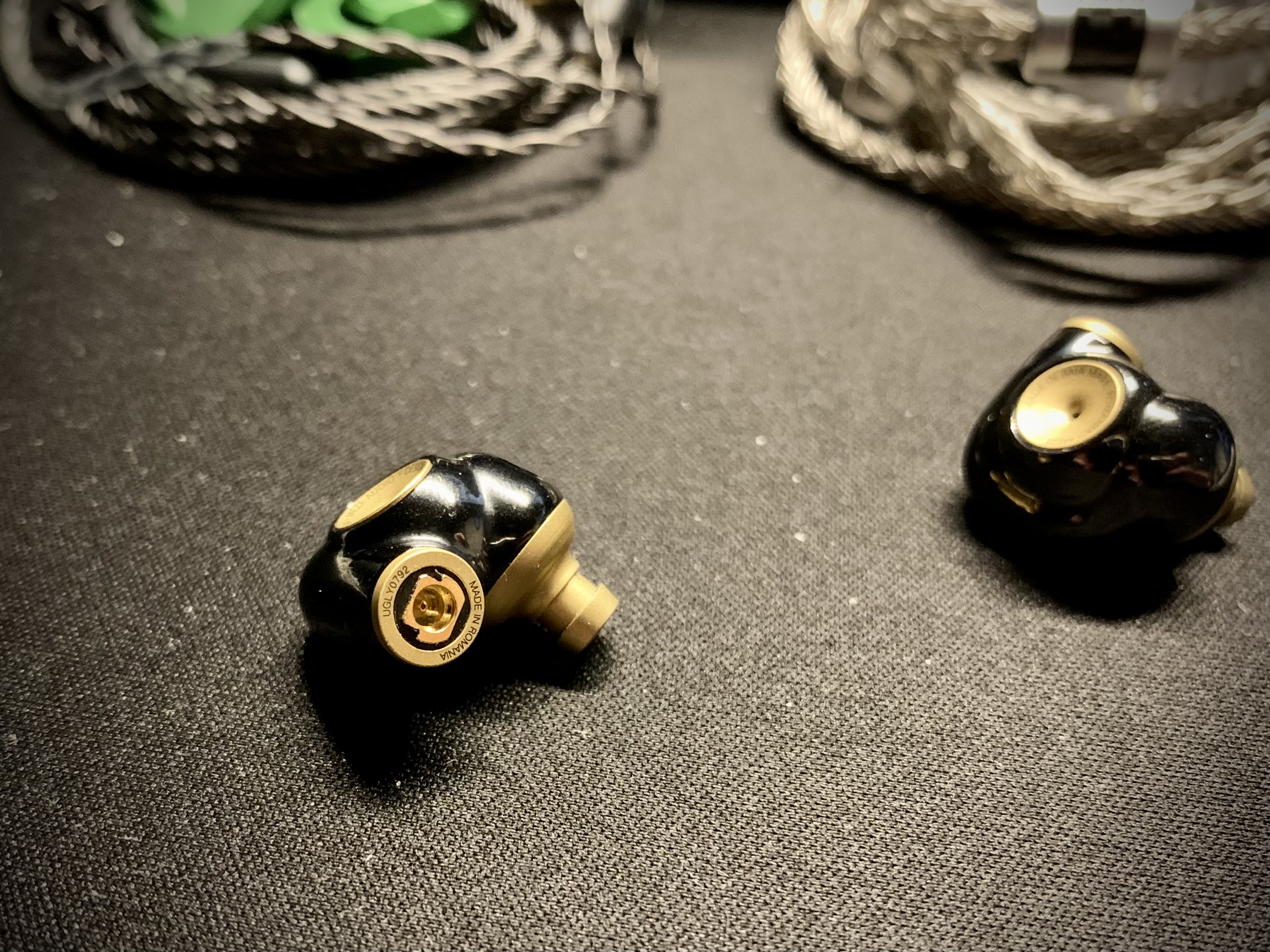
At the risk of sounding like a broken record, I must say that Advar looks and feels better in real life than in photos. Based on the official marketing materials, I thought Advar was a plastic IEM. However, Advar is made of a glossy and heavy material that feels similar to the ceramic used by Campfire Audio Solaris 2020 and Dorado. All of the golden components are metal. As a result, both earpieces feel like shiny and expensive pieces of marble.
Despite the weight, Advar is very comfortable. The ear pieces lock into my ear conchas securely. The comfort is excellent even in long listening sessions because the earpieces have no sharp edge (perhaps except for the sound. We will talk about that later).
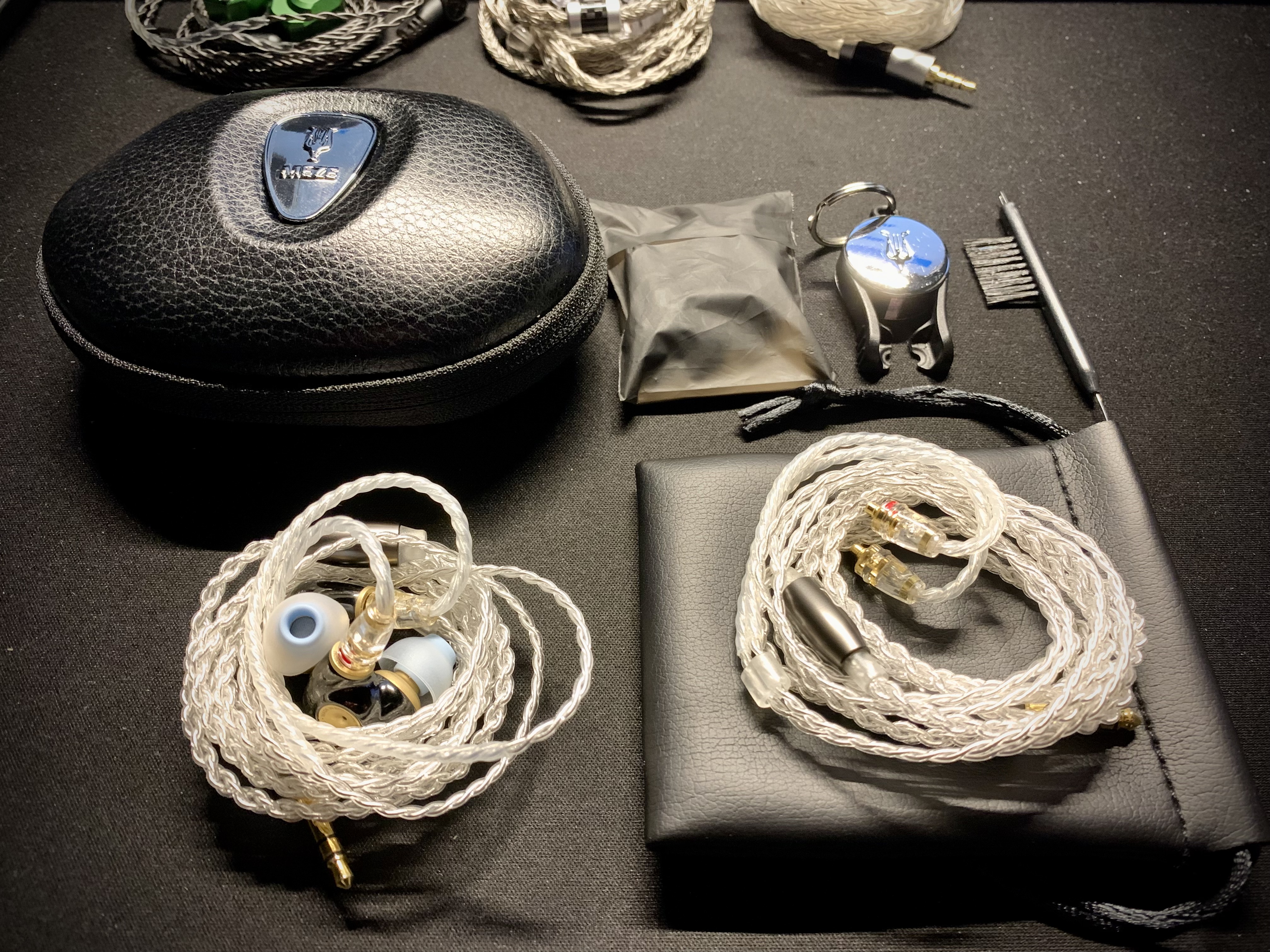
Meze accompanies Advar with a generous set of accessories. You have
- Full set of Type E ear tips,
- 1.2m MMCX cable terminated with a 3.5mm connector,
- Fancy MMCX removal tool,
- Cleaning tool
- Carrying case.
The cable is soft and well-behaved. The case is the most luxurious-looking one I have ever seen. The unboxing experience makes me think of Advar as a luxurious consumer product rather than “made by audio geeks for audio geeks”. With that in mind, how does Advar sound?
Sound Analysis
 Frequency response of Advar comparing to Andromeda 2020 and my preference target. Measurements were done with an IEC-711 compliant coupler and might only be compared with other measurements from this same coupler. Resonance peak was aligned at around 8kHz. Such peak appear higher on the graph than real life. Results above the resonance peak might not be accuracy. Visit my graph database for more comparisons.
Frequency response of Advar comparing to Andromeda 2020 and my preference target. Measurements were done with an IEC-711 compliant coupler and might only be compared with other measurements from this same coupler. Resonance peak was aligned at around 8kHz. Such peak appear higher on the graph than real life. Results above the resonance peak might not be accuracy. Visit my graph database for more comparisons.
The overall tonality of Advar is surprisingly similar to Campfire Audio Andromeda 2020. It has a warm and laid-back midrange, accompanied by sparkly and airy treble.
The bass is not detached from the rest of the tuning because there is no distinct bass shelf. However, Advar is not muddy or boxy. Instead, it has a natural and “large” bass response that fills the soundstage. The bass is well controlled and full of texture. Despite lacking a bass shelf, the bass still reaches deep with Advar. Personally, I still want a bit more bass.
The tonality of Advar is generally correct, but high notes can sound brighter than natural because of the lively treble. The treble of Advar is somewhat “old school”, focusing on the mid-treble region around 8kHz (sparkle, body of cymbals, chimes and hi-hats) rather than the lower-treble region around 5kHz (presence, note attack). The drawback is that the 8kHz peak can become piercing with harsh genres.
The part of the treble response that excites me the most is the dip from 10kHz, followed by a massive boost around 15kHz. The 10k drop creates the illusion of sound fading into the surrounding environment. The 15k gain highlights the outermost layer of the soundstage where background vocal, far-away details, room reverbs and decays exist. This excellent tuning, combined with the warm and laid-back midrange, helps Advar create a broad and deep soundstage without resorting to tuning tricks such as dips at 1k and 3k (64 Audio Trio and Fourte). However, Advar’s centre image still tends to locate inside my head rather than before me, like Andromeda and 64 Audio IEMs. The very energetic 8kHz region also makes the soundstage unrealistically tall sometimes.
The excellent treble also helps Advar achieves a resolving sound. I did not expect such performance from a single dynamic driver without any fancy material. It is not quite Andromeda level, but close enough to surpass many mid-fi competitors.
Finally, perhaps because of the dynamic driver, Advar successfully reproduces subtle variations and contrasts in dynamic (loudness levels from piano to forte).
Anyhow, enough with abstract descriptions. Let’s listen to some albums, and I will point out the strengths and weaknesses of Advar along the way.
Bach: Goldberg Variations by Lang Lang

I wouldn’t pretend I understand this piece of music more than “beautiful piano music that Hannibal Lecter likes.” However, I liked it enough that I went to a concert to hear it live. It turns out Goldberg Variations are also excellent for testing IEMs.
To put it bluntly, a poor IEM turns this hour-long piano piece into a chore rather than a pleasure. Successful rendering of this piece requires an IEM to reproduce dynamic variations and nuances in music. By dynamic variations, I mean the ability to play music at and smooth transition between different loudness levels, from very loud to very soft, without losing fidelity. “Nuances” or “details” here mean the subtle reverb and ringing sound hanging in the air after a piano key has been released.
Let’s listen to the variation 13 as a concrete example. Whilst the whole variation is already soft, there are frequent drops of dynamic to a very quiet level, such as around 0:50. Advar manages to reproduce these slight contrast well. Moreover, it successfully renders the subtle ringing sound of the piano when the keys are released at the softest moments, such as around 6:00.
Of course, when the dynamic raises to a higher level in the following variation, Advar gets loud. Following these subtle fluctuations and ringing sounds made the listening experience so engaging that the entire 30 variations passed me in a flash.
Shall We Dance by Andre Rieu and Johann Strauss Orchestra
Shall We Dance is the latest compilation of music by Andre Rieu and his orchestra, currently sold in music stores across Australia. I was so excited to see some of my favourite pieces on the tracklist that I didn’t realise they were just copies from previous albums. Anyhow, this compilation is excellent for testing the soundstage reproduction of an IEM.
Let’s listen to The Second Waltz as an example. This piece sounds similar to some classical CDs back in the 1990s, which place the orchestra in front of rather than around you. Therefore, headphones and IEMs tend to struggle with this piece. For example, my Blessing 2 tends to place the whole orchestra on a flat but wide plane in my head rather than projecting the sound forward.
How does Advar sound?
In the first 30 seconds, I can hear the snare near the centre, but a bit further to the background, whilst the cello and bass it near me, just a bit to the right. And then the saxophone comes, located right between the nearer bassline and the snare at the back, slightly to the left of the stage. The woodwind section comes after the saxophone, roughly at the same distance but tilted to the right of the stage.
Around 0:45, the string section comes, creating a dome of sound near the left back and covering a large part of the stage. Meanwhile, the bassline is always clear, allowing you to follow and, you know, waltz. The rest of the piece is also interesting because Advar can fully utilise its large stage to layer instruments from closer to further away.
Gundam Build Fighter OST
Let’s continue our listening with something more modern, shall we? This album explores Advar’s ability to render artificial soundstages in electronic music.
Battle bar (Apple Music, YouTube) is a great demonstration of Advar’s soundstage. The piece has a loop of two closer drum hits followed by a distant drum hit. Advar places the first two drum hits behind my neck and the distant one far in front of me, slightly to the right. The distant drum hit seems to decay across the whole stage rather than being limited to a single spot.
When the guitar comes, the whole stage becomes even more interesting. The sliding, high-pitched guitar float somewhere slightly above on the left side. The lower-pitched guitar is right at the centre (which is, unfortunately, in my head). And at the lower right, somewhere around my throat level, is the bass. The snares continue hitting on both sides, around the shoulder distance. The whole audio image is tack sharp. The bass is not loud but textured and deep.
Ed Sheeran Tiny Desk Performance
This performance is excellent for checking the detail retrieval capability of an IEM because you can see the band. It is also where Advar’s weakness is revealed: the peak at mid-treble. To put it bluntly, I have shivers whenever Ed hits high notes in Shivers, not because Advar sounds so good but because of the sibilances. The harshness here differs from the usual shoutiness of Harman and VDSF tuning, where the vocal is a bit too loud. No, the sharpness here comes from the “S” and “Sh” sounds. This problem is not unbearable and easily fixed, but I wish it does not exist.
Alright, back to the good part. This performance shows off Advar’s airy treble well. For example, it reveals the background vocal in Make it rain (from 3:45) with clarity and detail, not just a blob of sound. You can actually follow the vocalists’ hums. The chimes sound at the beginning of Visiting Hours (from 14:15) is also excellent. I can hear individual sounds distinctively rather than a blob of high-pitched sounds.
Comparisons and Rating
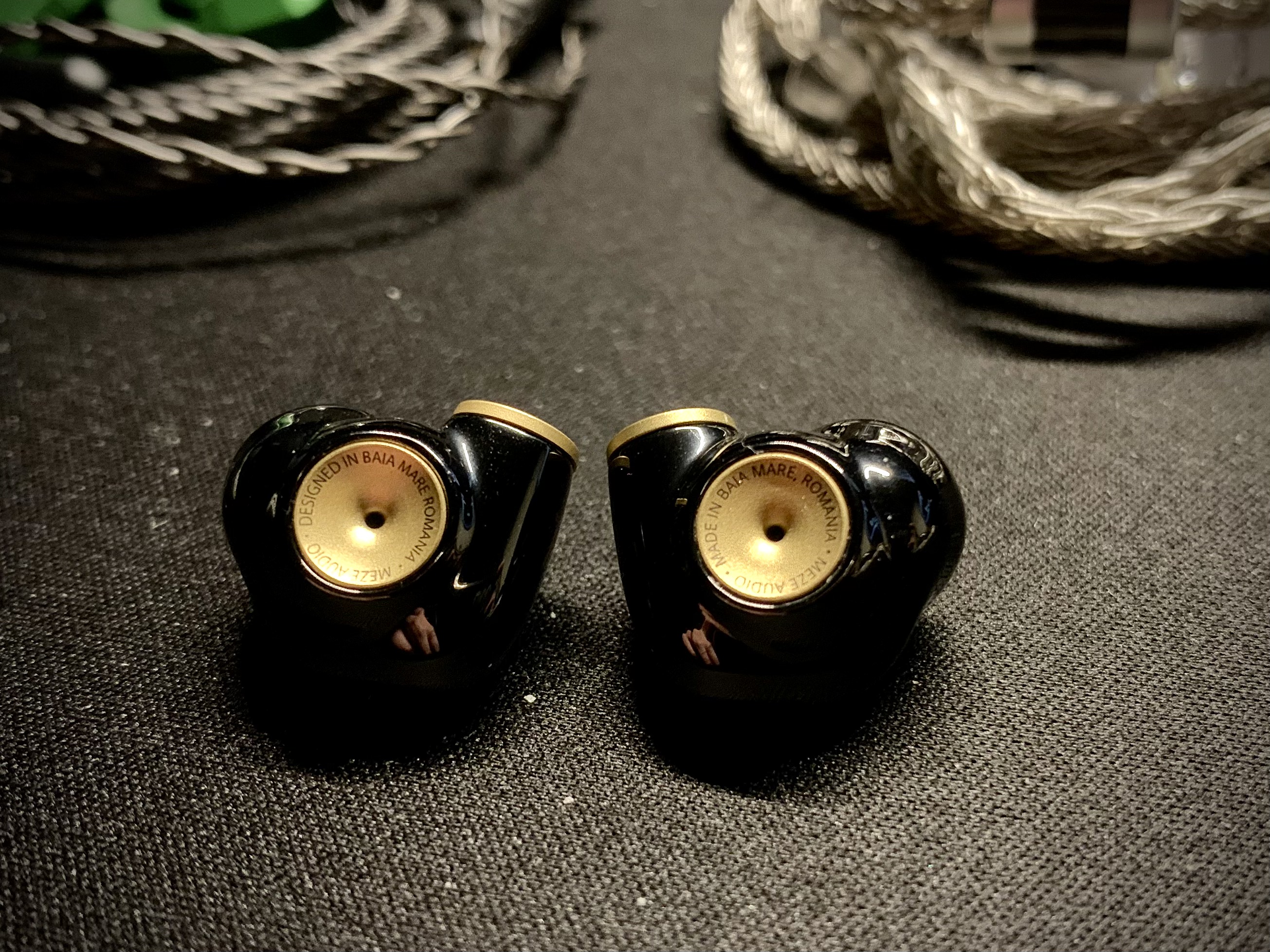
Resolution, Detail, Separation: 4.5/5 - Very Good
Resolution, detail retrieval, or “technical performance” denotes how finely and crisp an IEM or headphone can reproduce audio information. Resolution manifests itself in various aspects: (1) how clear and precise the attack of musical notes are, (2) how pinpoint musical notes are in the soundstage, (3) how detailed and nuanced the decay and reverb of musical notes are, (4) how clear can you hear background elements of a mix, (5) how separated similar sounding instruments are, and (6) can you hear the whole band or orchestra.
Advar is more resolving than I expected. It beats Blessing 2 (4/5 - Good) in all my test tracks and seems equal to my Andromeda (5/5 - Outstanding). However, Andromeda is still more resolving than Advar in the chaotic Presto movement of Summer. Therefore, I rate Advar 4.5/5 for resolution.
Percussion Rendering: 4.5/5 - Very Good
Percussion rendering reflects how well the tuning and technical performance of an IEM work together to recreate realistic sound of a drum set. Good drum hits have clear attacks (controlled by frequencies from 4kHz to 6kHz), full body (midbass frequencies around 200Hz), and physical sensation (sub-bass frequencies around 50Hz). Good technical performance (“fast” driver) ensures that bass notes can be loud yet detailed. IEMs that cannot control bass very well tend to reduce the bass’ loudness to prevent muddiness.
Advar has high-quality dynamic driver bass. Drums and bass instruments have a physical sensation (good sub-bass), a full and detailed body (good midbass), and snappy stick impacts. Across my test tracks, percussion sound better on Advar than on Blessing 2 (3/5 - Average) and A4000 (4/5 - Good, with excellent sub-bass but subdued midbass). However, it cannot challenge the realistic yet thunderous bass of a properly driven E5000 (5/5 - Outstanding). Therefore, I rate Advar 4.5/5 for percussion rendering.
Stereo Imaging (Soundstage): 4.5/5 - Very Good
Stereo imaging or “soundstage” is a psychoacoustic illusion that different recording elements appear at various locations inside and around your head. Your brain creates based on the cues such as the loudness and phase differences between left and right channels. Most IEMs do not differ significantly, nor can they compete with headphones or loudspeakers. However, some IEMs offer a more spacious soundstage than others. Best IEMs can create multiple layers of sound from closer to further away and make some instruments float slightly above your head.
Advar’s soundstage is outstanding, without a doubt, thanks to its excellent layering, depth, and the ability to highlight the outermost layer of the soundstage.
If I have to nitpick, I would say its centre image tends to locate inside my head rather than in front of me, perhaps because its ear-gain boost peaks at 3kHz rather than 2kHz. Combining this with a louder listening volume, you might feel the stage is rather near or “intimate”. This presentation is a crucial distinction between Advar’s soundstage and Andromeda’s or 64 Audio Trio’s. Both other IEMs tend to put the centre image slight in front of you at the normal listening volume.
In other words, Advar has a wide and engaging soundstage but does not try to mimic speakers.
I would also say the stage can sound artificial at times. For example, in some piano pieces, I can hear the lower notes at the bottom of the soundstage whilst higher notes float above my head. I don’t think such a piano exists.
Realistic or not, I don’t feel Advar is lacking compared to my Andromeda (5/5 - Outstanding), and its layering is more engaging than my A4000 (4/5 - Good). Therefore, I rate Advar 4.5/5 for soundstage.
Tonality: 3/5 - Average
My original rating for the tonality of Advar was 2.5/5 due to the 8kHz peak. However, during my final listening before writing this review, I found that the mid-treble peak is not that bad, perhaps because of replacing ear tips. Still, I think Advar is only average in tonality in the grand scheme. 3/5.
Source and Tips Pairing

I tested Advar on the following source:
- Xiaomi Mi A1 (very low quality, hissy onboard audio): Advar picks up a lot of noise. If you pick up an Advar, you can at least get an Apple dongle instead of using onboard DAC.
- Apple dongle: The noise floor is completely gone. However, I hear an unusual upward tilt to the sound signature, making Advar thinner and harsher than usual. I’m a bit puzzled because Advar is not a hard-to-drive IEM.
- Hidizs AP80 Pro X: Excellent. The sound is clear and correct, even on low gain.
- Fiio BTR5: Exactly the same as the Hidizs DAP.
- Fiio KA3: Exactly the same as the Hidizs DAP and BTR5.
- Fiio KA3 balanced via 4.4mm cable (optional accessory from Meze): The sound seems to be a bit “tighter”. However, this difference might be a placebo or volume difference because of the difficulty of rapidly switching cable and volume matching. If you get the 4.4 cable, it should be because you want to use your balanced source, not because you want sound quality improvement.
Advar is more sensitive to ear tips than expected. Despite Meze’s belief in Final Type E ear tips, I don’t think they are the right choice for Advar because they tend to intensify treble peaks, at least to my ears. I have more success with ear tips with wide-bore (to preserve treble) and stiff-core (to keep bass). I did most of my listening with some tips from Whizzer.
Real World Usage
I have used Advar for critical listening at home, for commuting, for outdoor walks, and work. Critical listening at home is the best use case for this IEM, given its sound quality.
Advar is usable but not ideal for commuting because its isolation is surprisingly low. It does reduce the noise a bit, but you can still hear the outside world. If you sit near a bus’s engine, all of the lower frequencies of Advar would be gone. Turning up the volume to compensate is not a good idea because the treble peak at 8k would get piercing.
Outdoor walks are more suitable for Advar. You can hear the surroundings, so you have less risk of being run over by a bicycle or an E-scooter. The lack of isolation further intensifies the soundstage illusion of Advar.
Whilst Advar can be used at your desk without any problem; I don’t think it is suitable for deep, focused work. The reason is simple: it is too engaging. It’s hard to focus if exaggerated 3D stereo images constantly bombard you. The other reason is less glamorous: the treble peak at 8kHz.
Conclusion
I have been on the hunt for something warm and laid-back but does not sacrifice tonality, resolution, dynamic, and soundstage. Meze Advar is one of the most cost-effective IEMs to reach that ideal sound. Beside the mid-treble peak at 8kHz, there is not much for me to complain about. Advar gets a high recommendation from this reviewer.
